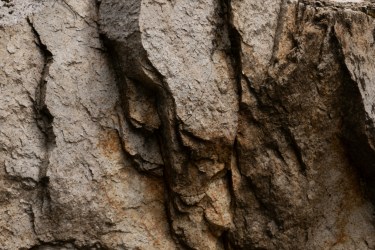
The discovery of an ancient Hebrew tombstone in southern India dating back to the 13th century could potentially unveil a forgotten Jewish community within the region.
The tombstone was discovered on a coconut farm in the city of Ramanathapuram in the state of Tamil Nadu. The inscription, a puzzle from the past, was deciphered by Thoufeek Zakriya, a Dubai-based history researcher and Hebrew calligrapher. His expertise led him to believe that the inscription dates back to the years 1224 or 1225 C.E.
Zakriya told the Indian news magazine The Week that the tombstone is older than the Sarah Bat Israel Tombstone in Kerala's Chennamangalam Synagogue, which he noted is "considered the oldest Hebrew tombstone ever identified in India."
According to World Jewish Travel, the Chendamangalam Synagogue is one of the oldest ever built by the Malabar Jews in Kerala. The structure dates back to 1420 A.D or 1614 A.D. In front of the building is a tombstone with the inscription of Sarah Bat Israel, dating back to 1270 A.D., making it one of the oldest Jewish relics in India.
Regarding the tombstone in Tamil Nadu, a 32-year-old chemical engineer named Hathim Ali from Ramanathapuram was the first to bring the tombstone to the public's attention. Ali heard of the discovery on a coconut farm from a friend. The farm owner, a man referred to as "Mr. Balu," found the tombstone in an old and unused well on his property.
"When I went to inspect it, I understood that it was neither Tamil nor Arabic. Later, I thought maybe it could be Hebrew," Ali told The Week, saying that he informed government authorities about the tombstone, but no one came to inspect it.
Ali told the newspaper Dinamalar about the discovery, a story Zakryia later read about in the paper. Zakryia works for the United Arab Emirates, and Rajaguru, the president of the Ramanathapuram Archaeological Research Foundation, forwarded the story to him. The Jewish history researcher contacted Ali, who then sent him pictures of the tombstone to decipher.
"The Hebrew inscription bears the date as the 1st of Shvat (Hebrew Month) 1536 or 1537 of the Seleucid era," Zakriya told The Week.
As the Jewish Virtual Library explains, the Seleucid Era was a system of numbering years for Jewish communities during the Second Temple period and a few communities in the late medieval period and modern times. In Hebrew, this era is often referred to as "minyan shetarot."
"When converting the dates from the Seleucid era to the common era, it was found that the date on the tombstone inscriptions is approximately equivalent to January 1, 1224 AD, or January 18, 1225 AD," Zakriya told The Week.
The researcher also informed the outlet that he could not decipher every line of the inscription due to damage to the tombstone.
"So, I could not find the name of the deceased or his father. ... But I could see a name partially which could be read as Nehemiah in Hebrew," he said. "The initial analysis shows a strong Yemeni Jewish influence in the tombstone's pattern."
However, Zakriya insisted that more studies should be conducted in the area, noting that this is the second tombstone with Hebrew inscriptions found in Ramanathapuram. The Jewish history expert lamented that no one appears to have deciphered the tombstone's date, which the historian referred to as a "tragedy."
Courtesy of The Christian Post.




